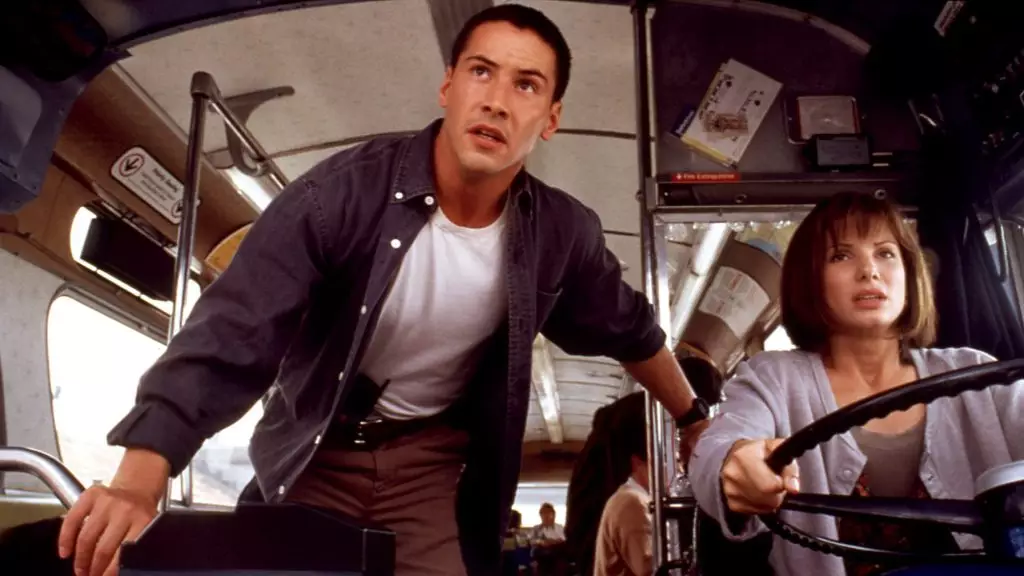Released in 1994, *Speed* became an action cinema classic, known for its adrenaline-inducing stunts and gripping narrative. As the film marks its 30th anniversary, Keanu Reeves and Sandra Bullock recently shared anecdotes from their time working on the film. During a reunion at Beyond Fest, the duo recounted moments when the chaos of filming felt almost too intense, particularly one thrilling sequence involving a bus that seemed to veer far too close to reality. Reeves candidly described their surprise during a scene where their bus mishandled its way through a busy street, leading to unexpected crashes and pandemonium.
Actors typically trust filmmakers to guide their performances, but this incident highlighted a lack of communication that elevated tension for the cast. Reeves expressed how the noise and excitement of the moment caught everyone off-guard, emphasizing the genuine reactions of the cast and crew who found themselves amidst live action and real danger. Such behind-the-scenes revelations peel back the curtain on the filmmaking process, illustrating that what audiences saw on screen was not merely orchestrated action but also a raw, unfiltered experience for the actors involved.
Throughout *Speed*, Bullock’s character, Annie Porter, is depicted as a determined woman who finds herself behind the wheel of a bus packed with endangered passengers. However, Bullock herself admitted to never having actually driven the bus; instead, she was part of a unique filming technique where another professional driver handled the vehicle while she performed her scenes. Her revelation brings to light the challenges of filming action sequences and the creativity employed by directors like Jan de Bont to achieve jaw-dropping sequences without endangering the cast.
Bullock’s commentary not only underscores the complexity of her character’s situation but also raises questions about safety in film production. In a manner reminiscent of stunt doubles, it’s evident that the cast often walks a fine line between performing and pretending, as directors push the boundaries of what constitutes thrilling cinema. The dynamic captured during the film helped define an era of action filmmaking as it sought authenticity while maintaining a semblance of safety.
While the thrill of the original *Speed* remains unchallenged, the conversation of sequels in contemporary cinema often leads to mixed sentiments. Bullock’s thoughts on the potential for another sequel speak to the broader industry challenges, where studios are hesitant to pursue projects that lack a clear vision or can meet modern expectations. The landscape of Hollywood has evolved, making the prospect of revisiting past successes both tantalizing and fraught with uncertainty.
For fans of the franchise, the idea of a continuation is exhilarating but tempered by the realization that a successful formulative approach to storytelling may not be attainable without significant evolution. The industry is constantly shifting, and cast members like Bullock express a nuanced understanding of the pressures and artistic integrity necessary to produce a worthwhile sequel. As they weigh the prospect of returning to their iconic roles, it’s clear that the legacy of *Speed* will endure, regardless of whether another chapter emerges in the saga.
*Speed* remains a poignant example of high-octane filmmaking that pushed boundaries. Its exploration of behind-the-scenes experiences enriches our appreciation for the film, while the discussions around potential sequels reflect the complexities of modern-day cinema.

Leave a Reply